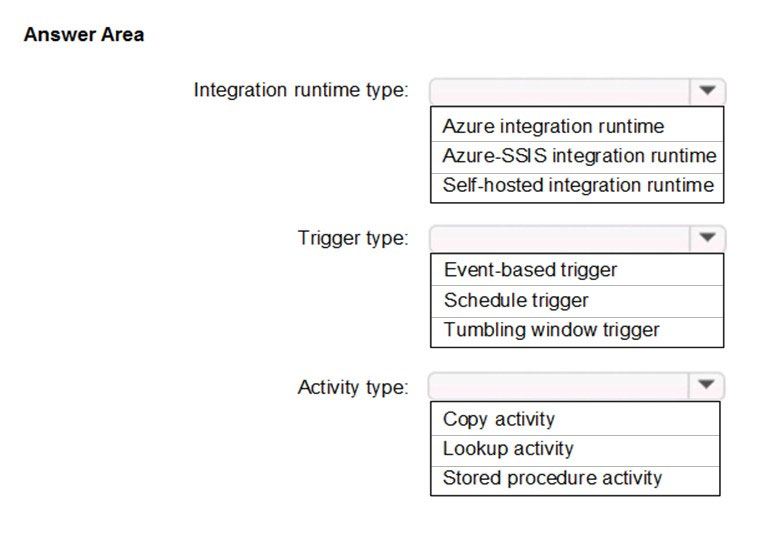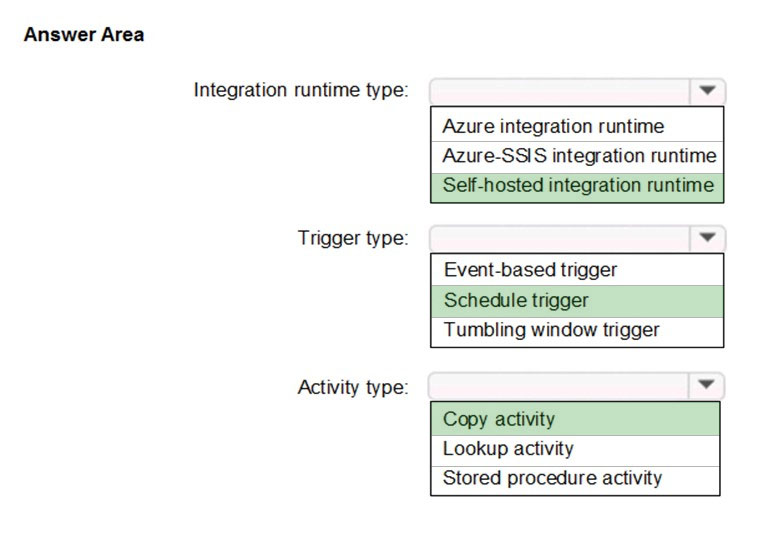

HOTSPOT -
Which Azure Data Factory components should you recommend using together to import the customer data from Salesforce to Data Lake Storage? To answer, select the appropriate options in the answer area.
NOTE: Each correct selection is worth one point.
Hot Area:

Leonido
Highly Voted 4 years, 12 months agovistran
4 years, 11 months agoanamaster
4 years agodinu517
4 years, 9 months agoknightkkd
4 years, 6 months agolgtiza
3 years, 8 months agoDevendra00023
4 years agoBungyTex
Highly Voted 4 years, 4 months agoLarrave
Most Recent 3 years, 4 months agodbdev
3 years, 10 months agomaynard13x8
4 years agoPsycho
3 years, 11 months agomohowzeh
4 years, 3 months agosyu31svc
4 years, 4 months agomaster28aug
4 years, 7 months agokittykat
4 years, 8 months agoAJMorgan591
4 years, 7 months agoessdeecee
4 years, 6 months agoM0e
4 years, 6 months agoessdeecee
4 years, 6 months agokrisspark
4 years, 8 months agoAJMorgan591
4 years, 7 months agopeppele
4 years, 9 months agoAnilpanda10
4 years, 9 months agoproca
4 years, 9 months agoTommy65
4 years, 9 months agopravinDataSpecialist
4 years, 10 months agoYuri1101
5 years agoTombarc
5 years agospiitr
4 years, 2 months agoAusAv
4 years, 7 months agoM0e
4 years, 6 months agoHCL1991
4 years, 12 months ago